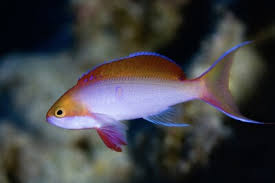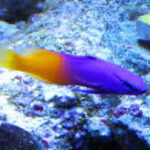The Appearance of Dragons in Legends of Natural Disasters

Throughout human history, dragons have been symbols of immense power, mystery, and awe. These mythical creatures have appeared in numerous cultures worldwide, often connected to the natural world. One of the most intriguing aspects of dragon mythology is their involvement in legends about natural disasters. Whether depicted as the cause of calamities or as creatures that can control or mitigate them, dragons have played significant roles in shaping how ancient peoples understood and reacted to natural phenomena. In many of these stories, dragons are not merely mythical beasts but embodiments of the forces of nature, representing the unpredictable power of the elements and the mysteries of the earth.
In this article, we explore the appearance of dragons in various legends and myths surrounding natural disasters. From storms and floods to earthquakes and volcanic eruptions, dragons have often been invoked as the harbingers of catastrophe, as well as symbols of balance and renewal. By delving into these myths, we can gain insight into how different cultures have interpreted natural disasters and the role of dragons in their understanding of these destructive forces.
1. Dragons and Storms: The Masters of Weather
In many cultures, dragons are closely associated with storms, particularly thunderstorms, and typhoons. Their role in controlling or even creating storms reflects the ancient belief that dragons had dominion over the natural world. In Chinese mythology, the dragon is traditionally seen as a water deity, controlling rain, rivers, and the sea. This connection between dragons and water is often linked to the control of storms and floods.
In Chinese legend, the Long Wang (Dragon King) is a god of water, often depicted as ruling over the seas and lakes. When the land experiences drought or heavy flooding, it is said that the Dragon King either holds back or releases the rains, depending on his mood or the requests of the people. In these stories, the dragon’s presence in the sky, controlling the rain, symbolizes the balance between creation and destruction, as the weather can bring life or cause devastation.
In Japan, the mythical ryu or dragon also plays a significant role in weather-related disasters. These dragons are often believed to be the cause of typhoons or cyclones. Legends say that when a dragon becomes angry, it can stir up the seas, causing massive storms that devastate coastal towns and cities. On the other hand, when the dragon is calm, it can bring rain to nourish the crops or ensure good harvests. The connection between dragons and storms in Japanese and Chinese myths emphasizes the belief that these creatures, like nature itself, possess both creative and destructive powers, capable of changing the course of human lives.
2. The Dragon and Floods: Creatures of the Deep
Flooding is another natural disaster that often invokes the presence of dragons in various cultural myths. In these stories, dragons are not just beings that stir up storms but creatures that dwell in the depths of rivers, oceans, or lakes, capable of causing massive flooding or controlling the flow of water.
In Chinese mythology, the Jianglong, or river dragon, is a powerful creature often depicted as residing in rivers and lakes. These dragons are believed to control the water’s flow, and when angered, they can cause devastating floods. In some legends, the Jianglong’s roar is said to bring rain that causes flooding, while in others, the dragon’s presence is believed to be a warning of an impending deluge. The Jianglong’s role in these tales highlights the deep connection between dragons and water, reinforcing the belief that these creatures govern the life-sustaining force of water while also possessing the power to destroy.
Similarly, in other cultures, dragons are seen as responsible for causing floods. In the mythology of certain Native American tribes, such as the Pueblo people, the dragon is believed to control the rainfall and the rivers. In some stories, the dragon causes the rivers to overflow, while in others, it is said that the dragon’s death leads to a great flood that reshapes the land. These tales, often passed down through generations, reflect the peoples’ dependence on the natural forces of water, as well as their reverence for creatures like dragons that were thought to control these elements.
3. Earthquakes and Volcanic Eruptions: Dragons as Harbingers of Destruction
In addition to storms and floods, dragons are also prominently featured in myths about earthquakes and volcanic eruptions. The destructive power of the earth itself often finds its mythical expression in dragons, whose movements or anger are believed to trigger these catastrophic events.
In Greek mythology, the dragon Typhon is a terrifying creature associated with chaos and destruction. Typhon is said to be the father of many monstrous beings, including the destructive forces of nature. He is often depicted as a serpent-like creature whose rage causes earthquakes, volcanic eruptions, and storms. The imagery of Typhon as a dragon-like creature that causes natural disasters emphasizes the belief in ancient times that catastrophic events were the result of an angered, supernatural force—often depicted as a dragon or serpent.
In Chinese mythology, dragons are also linked to earthquakes, particularly in tales where dragons are seen as the creatures that cause the earth to tremble. One such legend tells of a massive dragon that stirs in its underground lair, causing the earth to shake and rattle. The earthquake, in these tales, is seen as a warning or a manifestation of the dragon’s displeasure. The connection between dragons and earthquakes illustrates the idea that dragons are not merely creatures of the sky and sea but also entities tied to the very heart of the earth itself.
In some cultures, volcanic eruptions are also tied to the presence of dragons. In Hawaiian mythology, for example, the volcano goddess Pele is often associated with the destructive power of the earth, and her fiery anger is said to manifest in volcanic eruptions. In some versions of the myth, dragons or dragon-like creatures are believed to reside within the volcanoes, guarding the fiery depths of the earth. When these creatures are disturbed or angered, they are said to cause the volcano to erupt, spewing fire and ash across the land. This connection between dragons and volcanic eruptions highlights the belief that natural disasters often have supernatural causes, with dragons acting as the bearers of such destruction.
4. Dragons as Symbols of Balance and Renewal
Despite their role in causing destruction, dragons are also symbols of balance and renewal in many cultures. In many myths, natural disasters are not viewed solely as negative events but as part of a larger cycle of life, death, and rebirth. The dragon’s role in these cycles is significant, as it is often seen as a mediator between chaos and order.
In Chinese folklore, for example, dragons are sometimes seen as bringers of both destruction and renewal. When a dragon stirs the seas or causes a flood, it is not merely a punishment but a way to cleanse the earth and ensure future prosperity. The dragon’s power over water is symbolic of the cycles of nature—just as water can destroy, it can also bring life. This duality of the dragon as a creature of both destruction and creation reflects the ancient understanding that natural disasters, while devastating, also serve as essential processes in the grand scheme of the world’s balance.
Similarly, in Norse mythology, the dragon Níðhöggr, which gnaws at the roots of Yggdrasil, the World Tree, is often interpreted as a symbol of the destructive forces of nature. However, Níðhöggr’s actions also represent the cyclical nature of life and death, as the dragon’s destruction is necessary for the regeneration of the world. This concept of the dragon as a force of both destruction and renewal is a common thread in many dragon legends across cultures.
5. The Dragon’s Role in Modern Interpretations of Natural Disasters
Today, the image of dragons in the context of natural disasters continues to captivate the human imagination. While we may not literally believe in dragons causing earthquakes, storms, or floods, the symbolism of the dragon persists in modern storytelling, art, and even in discussions about climate change and environmental disasters.
In modern times, dragons often appear in literature, film, and video games as symbols of environmental destruction or as metaphors for the uncontrollable forces of nature. These representations continue to draw on the ancient mythological associations between dragons and natural disasters. In many modern stories, dragons are still depicted as forces of nature that can either cause catastrophic destruction or bring balance to a chaotic world.
Conclusion
Dragons, with their fearsome power and mysterious nature, have long been tied to the forces of nature in mythological traditions around the world. Whether they are causing storms, floods, earthquakes, or volcanic eruptions, dragons serve as symbols of the uncontrollable and often unpredictable forces that shape the natural world. But beyond their role in causing disaster, dragons also embody the idea of balance and renewal, reminding us that destruction is often part of a larger cycle of life. As these ancient myths continue to be retold and reinterpreted, dragons remain enduring symbols of nature’s awe-inspiring power and its ability to both destroy and regenerate.

